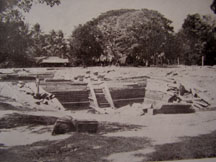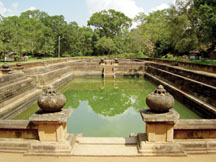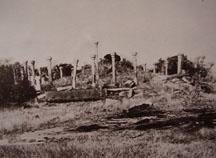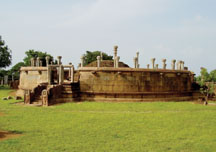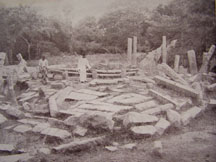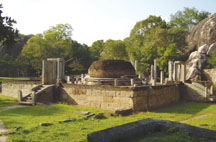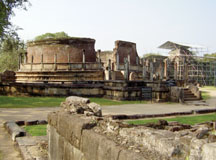|
observer |
|
|
|
|
|
OTHER LINKS |

|

|

|
|
|
|
|
We are sure that you may have visited at least some of the archaeological sites in Sri Lanka. Most people have been to at least the more well-known places.
|
|
Have you ever been to places full of rubble? That may have been after these places were cleaned, tidied and restored by the Department of Archaeology. This Department has taken a lot of trouble to restore many valuable sites in Sri Lanka, and by observing these places and the work they have carried out, we can get an idea of what these places would have looked like in the past. Have you ever thought how such a place may have looked when it was first discovered?
|
|
Exploration Officer, Department of Archaeology, T.M.C. Bandara explained to the Junior Observer the service the Department has carried out to conserve our historical places and bring back a semblance of their original glory.
|
|
"These sites do not belong to the Department of Archaeology, they belong to the people living around them. We are just guardians who look after and care for them, for the benefit of future generations", Bandara said.
Most Sri Lankans are not aware of the important role of the Archaeology Department, and about the work it has carried out throughout the years. The Archaeology Week, which started on July 7, is the ideal time to find out what activities this Department has carried out in different parts of the country.
|
|
You too can attend the island-wide exhibition and seminar programme the Department is conducting, which will give you an idea about protecting artifacts.
|
|
According to Bandara, Sri Lanka has had a museum about 2,000 years ago, which has led archaeologists to believe that the island would have been the first country to have the concept of museums.
In this museum, the king of the day had preserved parts of the ship in which Sanghamitta Theri had arrived.
During the British rule, John Still, in his famous book 'Jungle Tide', had written: "There are artifacts in Polonnaruwa in a place full of tigers and bears. Because of the forest around, I missed my way everyday".
|
|
Now, we realise what the fate of our precious artifacts would have been.
(For details of Haththicuchi Viharaya see the Heritage Splendour page of June 25,2006 and for details of Girihandu Seya see the paper of May 7,2006. See the Junior Observer of December 19,2004 for Polonnaruwa Vatadage and October 24,2004 for Kuttam Pokuna).

